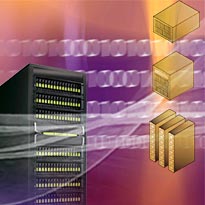Home
From Wikibon
| Line 45: | Line 45: | ||
| - | [[Category:Blade computing]]<br />[[Category: Business compliance]]<br />[[Category: Clustered storage]]<br />[[Category: DMX]]<br />[[Category: Data classification]]<br />[[Category: Disaster recovery]]<br />[[Category: EMC]]<br />[[Category: Email archiving]]<br />[[Category: Email storage]]<br />[[Category: Green storage]]<br />[[Category: Hitachi]]<br />[[Category: IBM]]<br />[[Category: Managing storage]]<br />[[Category: Mobile Enterprise Wikitips]]<br />[[Category: NAND]]<br />[[Category: SSD]]<br />[[Category: STEC inc]]<br />[[Category: Storage consolidation]]<br />[[Category: Storage disaster recovery]]<br />[[Category: Storage services]]<br />[[Category: Storage vendor management]]<br />[[Category: Storage virtualization]]<br />[[Category: WEB2.0]]<br />[[Category: Wikitips]]<br /> | + | |
| + | [[Category:Blade computing]]<br />[[Category: Business compliance]]<br />[[Category: Clustered storage]]<br />[[Category: DMX]]<br />[[Category: Data classification]]<br />[[Category: Disaster recovery]]<br />[[Category: ECM]]<br />[[Category: EMC]]<br />[[Category: Email archiving]]<br />[[Category: Email storage]]<br />[[Category: Green storage]]<br />[[Category: Hitachi]]<br />[[Category: IBM]]<br />[[Category: Managing storage]]<br />[[Category: Mobile Enterprise Wikitips]]<br />[[Category: NAND]]<br />[[Category: SSD]]<br />[[Category: STEC inc]]<br />[[Category: Storage and business compliance]]<br />[[Category: Storage consolidation]]<br />[[Category: Storage disaster recovery]]<br />[[Category: Storage services]]<br />[[Category: Storage vendor management]]<br />[[Category: Storage virtualization]]<br />[[Category: WEB2.0]]<br />[[Category: Wikitips]]<br /> | ||
Revision as of 00:21, 4 December 2008
Peer Incite: Grant, a Sr. Storage Admin at a large bank discusses how heterogeneous storage virtualization can help reduce the budget for 2009.
WikitipWhat Every Enterprise Needs Is a VoIP High Quality Speech Enabled Auto Attendant, or SEAAEvery enterprise needs to consider a VoIP High Quality Speech Enabled Auto Attendant (SEAA), especially as growing bandwidth and the omnipresence of SIP makes it possible to deliver high quality speech applications from the cloud. A recent LinkedIn Poll revealed, however, that people prefer talking to real persons. With 60% out of 200 businessmen saying they would call the receptionist to get the telephone number of a business colleague and the remaining 40% were slightly in favor of the “SAY the name” over the “SPELL the name” option, the question that remains to be asked is why SEAA and not a receptionist? Answering phone calls in a high quality consistent manner and transferring those calls quickly and accurately to the correct person, department, or information is a key part of running a successful business. Fewer than 30% of phone calls to a place of business are clients or prospects with the remainder divided among “friends and family”, outside vendors, other employees, and other enterprise support organizations according to statistics from drvoip.com. These facts seem to provide good business reasons to automate at least some of the call answering. Why Enterprises Should Deploy SEAA Solutions? • To create a consistent highly polished customer call experience; • To improve internal employee-to-employee communications; • To create an option to free up live operators for “high touch” customer calls; • To create a “numberless enterprise”, allowing employees to be highly mobile yet completely reachable through SEAA; • To route calls globally across the enterprise WAN to reduce telecom costs and avoid complex international dialing; • To use SEAA as a “Disaster Recovery” solution to connect employees and customers. Use of SEAA has up until now been reserved for larger enterprises where the ROI makes sense, because installing a high quality SEAA has been discouragingly expensive and technically challenging, involving premise-based installation of a dedicated server and expensive speech recognition licenses. Now, new cloud-based solutions are available that use architectures designed to dramatically reduce the cost of SEAA and simplify the deployment and maintenance to a simple subscription based SaaS model. These provide high-quality speech recognition at an affordable price to even the smallest and most distributed businesses, allowing those enterprises to deliver a highly polished and consistent experience to the caller. Learn more about Mobiso’s enterprise SEAA and UC Solutions and the advantages and disadvantages of implementing different types of SEAA solutions by reading our white paper: "Why Every Enterprise Needs a VoIP High Quality Speech Enabled Auto Attendant". Feel free to share with us in a comment below any questions or suggestions regarding our approach. |
Featured Case StudyVirtualization Energizes Cal State UniversityJohn Charles is the CIO of California State University, East Bay (CSUEB) and Rich Avila is Director, Server & Network Operations. In late 2007 they were both looking down the barrel of a gun. The total amount of power being used in the data center was 67KVA. The maximum power from the current plant was 75kVA. PG&E had informed them that no more power could be delivered. They would be out of power in less than six months. A new data center was planned, but would not be available for two years. |
|
Featured How-To Note |
Storage Virtualization Design and DeploymentA main impediment to storage virtualization is the lack of multiple storage vendor (heterogeneous) support within available virtualization technologies. This inhibits deployment across a data center. The only practical approach is either to implement a single vendor solution across the whole of the data center (practical only for small and some medium size data centers) or to implement virtualization in one or more of the largest storage pools within a data center. | |||



